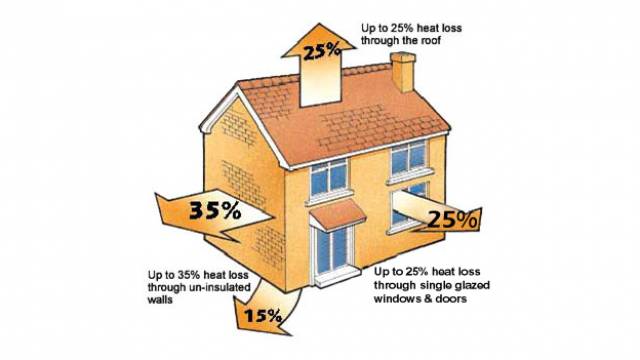Myths and misconceptions, poor standards and slow industry are some of the reasons why Australia is behind the rest of the world with regards to energy efficiency, with its inefficient residential and commercial buildings.
Residential and commercial buildings account for almost half of all annual worldwide energy consumption and greenhouse gases.
In fact, the Australian Academy of Science states that in maintaining the standard of living, each Australian produces enough carbon dioxide (CO2) to replace the column of atmosphere above one square metre of land, every year.
Furthermore, the average Australian house will produce enough CO2 to entirely replace the atmosphere above it with greenhouse gas.
Designing and building energy efficient residential and commercial buildings is a priority for Australia. It is vital that the building and construction industry moves to higher star rating buildings that deliver better energy and thermal efficiency and comfort. Overseas, the move to energy efficient building took place over 30 years ago, with the US and Europe that have been driving sustainable construction through government initiatives, industry building codes and standards. However, the Australian building sector has been slow at ensuring all factors of construction are contributing to energy efficiency and greenhouse gas emissions reduction.
Double glazed windows are a popular choice across Europe and the US as a key solution for thermal and energy efficiency. According to Richard Walker, president and CEO of the American Architectural Manufacturers Association, double glazed windows accounted for over 55% of all new and replacement windows in the US in 2012. In Australia, it is estimated that the double glazed window market is less than 5%, even though the country has a similar climate to parts of the US.
New Zealand, on the other hand, has introduced double glazing in residential windows into its NZ Building Code (Clause H1 Energy Efficiency).
Residential windows in Australia typically perform very poorly in terms of thermal efficiency. Windows are the single most important source of heat loss from an insulated building – an unprotected single pane of ordinary glass loses almost 10 times more heat than the same area of insulated wall.
There has long been a misconception in Australia that double glazing is only for cold climates to keep the cold outside, but double glazing is also just as effective in keeping the heat of an Australian summer out. In fact, standard glazed windows contribute to 87% of the summer heat gain in a typical Australian insulated home. Using double glazing can result in significant savings of 40% off energy bills for heating and cooling.
Unfortunately, there is a lack of common understanding in the Australian market of the benefits of double glazed windows for occupier comfort and lower cost bills. In addition, most windows in Australia (double and single) are aluminium, which is a poor insulator and provides little if any improvement to the thermal efficiency of a home.
Australian standards for new buildings are insufficient in weighting sustainable practice. They focus upon certain materials while overlooking thermal efficiency and its impact upon the overall building envelope. 6-star energy ratings for new homes have long been the minimum standard in many countries, whereas they have only been recently mandated in some Australian states.
Australians will continue to miss out on low bills, low greenhouse emissions and comfortable homes and buildings for as long as they continue to ignore the facts about thermal efficiency. It is time for industry standards, building codes and government policies to focus effectively on energy and thermal efficiency.




